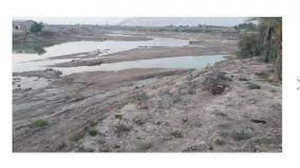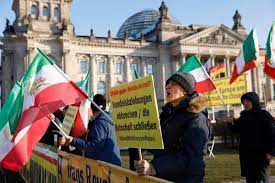
Social media activists circulated pictures of the Karkheh River after it was drained by the Iranian occupation authorities, and pictures of it before the criminal occupation operations.
The Karkheh Dam in Ahwaz was completely drained, in a planned and deliberate manner, due to the transfer of the waters of the Ahwazi rivers to the Isfahan governorate in the Persian depth.
Which led to a decrease in the level of the Karkheh River and a weak amount of water held by dams, and this was confirmed by Ahwazi activists, as the decrease in the river level is due to the occupation authorities’ dragging water towards the Persian regions, and this behavior led to depriving Ahwaz lands of access to water and this matter Which is about to cause drought and destruction of agricultural lands in Ahwaz.
And the Karkheh river was not the only one that was affected by the Persian hands, as the crises in Al-Ahwaz have worsened recently. Al-Ahwaz website highlighted several reports regarding the Karkheh river, where Ahwazi sources appeared about the Persian occupation’s scheme to destroy the forests of the Karkheh River, west of Al-Ahwaz, and that more than 11 hectares of forests were destroyed by cutting down thick trees, for projects in favor of the Persian occupation
In 1990, the Crisis Management of the Persian occupation planned to build a dam on the Karkheh River in the agricultural lands owned by the Ahwazis, but due to the opposition of the population, it carried out the construction of the dam in the environmentally protected lands in the Karkheh forests without an environmental permit despite opposition and a lawsuit against the dam, but the work did not stop.
The Karkheh or the historical Teri River enters from the north of Ahwaz. The length of the Karkheh River is about 900 km, and it originates from the Zagros Mountains and runs 755 km in the southwest direction until it flows into the Great Marsh that lies between Ahwaz and Iraq, passing through the cities of Sous, Hamidiyah, Khafajia and then Al-Hawizeh. The Karkheh Dam was built, the largest dam on the riverbed, with a storage capacity of 5.9 billion cubic meters and an electrical production capacity of 520 megawatts.




